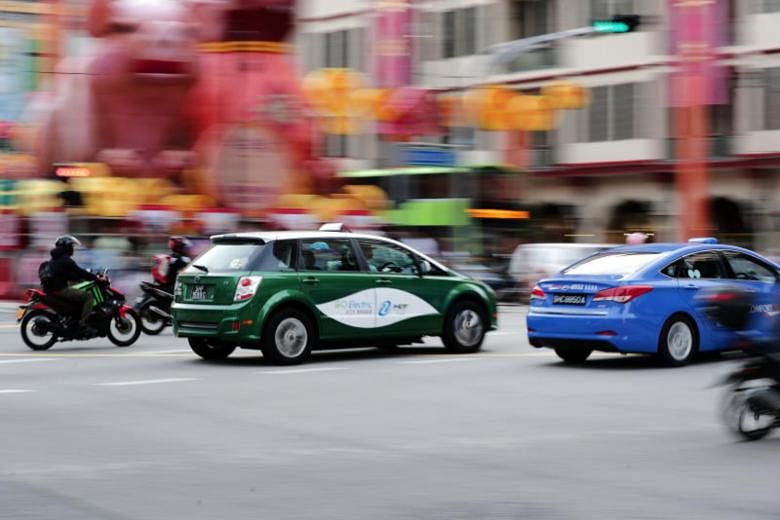SINGAPORE - During the debate on the Government's sustainability plan on Tuesday (March 8), Transport Minister S. Iswaran unveiled new targets and measures in a major push for a greener land transport sector.
These new moves will help Singapore to achieve what Mr Iswaran said is an ambitious goal: cutting land transport emissions by 80 per cent from a peak of 7.7 million tonnes in 2016 to 1.54 million tonnes around 2050.
This is how the Land Transport Authority (LTA) is accelerating its green agenda:
1. New COE criterion for EVs
Fully electric vehicles (EVs) with up to 110kW of power will come under the Category A certificate of entitlement (COE) from May, giving motorists more choices in that category.
The maximum power output raise for Category A from 97kW to 110kW, which will apply exclusively to EVs, means that buyers of mass market models such as the Hyundai Ioniq Electric and Nissan Leaf would pay less since they would not be competing in the Category B COE segment, which tends to have higher premiums.
2. All HDB towns to be 'EV-ready' by 2025
At least three EV charging points will be installed in nearly 2,000 Housing Board carparks over the next three to four years, so that by 2025 all HDB towns will be able to cater to battery-powered cars.
These charging points will mostly provide low-powered, overnight charging, which minimises the load on the electrical grid. More charging points will be installed at carparks where there is demand and adequate electrical capacity.
3. Electrifying taxis and private-hire cars
Taxis that run on batteries will be allowed to ply the roads for 10 years, up from eight currently. This will support a new goal of electrifying half of the taxi fleet here by 2030, and allow taxi operators to optimise their investments and price rentals more competitively.
For private-hire cars, half of the fleet owned by GrabRentals, ride-hailing giant Grab's rental arm, will also go electric by 2030.
4. More electric public buses
By 2030, at least one in two public buses here will be electric, bringing the number of battery-powered buses from 60 today to about 3,000.
The Land Transport Authority will achieve this by primarily purchasing electric buses.
More than 400 diesel-powered buses will be replaced by fully electric ones by 2025, and more electric buses will be added to the public bus fleet as the remaining diesel buses reach their statutory lifespan of 17 years.
5. Improving EV charging
Switchrooms and substations at residential estates will be upgraded to ensure there is sufficient electrical capacity to support EV charging.
These upgrades will be funded through the issuance of green bonds.
Laws covering the approval and registration of EV chargers and licensing of charging operators will also be introduced following public consultation later this year.
6. Solar power
A tender will be called later this month to install solar panels on top of new and existing land transport infrastructure, including overhead bridges, covered walkways, and rail and bus depots.
There will also be solar panels on various LTA buildings and structures, including its offices and the upcoming Integrated Train Testing Centre in Tuas.
In all, LTA expects to generate solar capacity of up to 45 megawatt-peak by 2030. This will reduce both emissions and energy costs.


